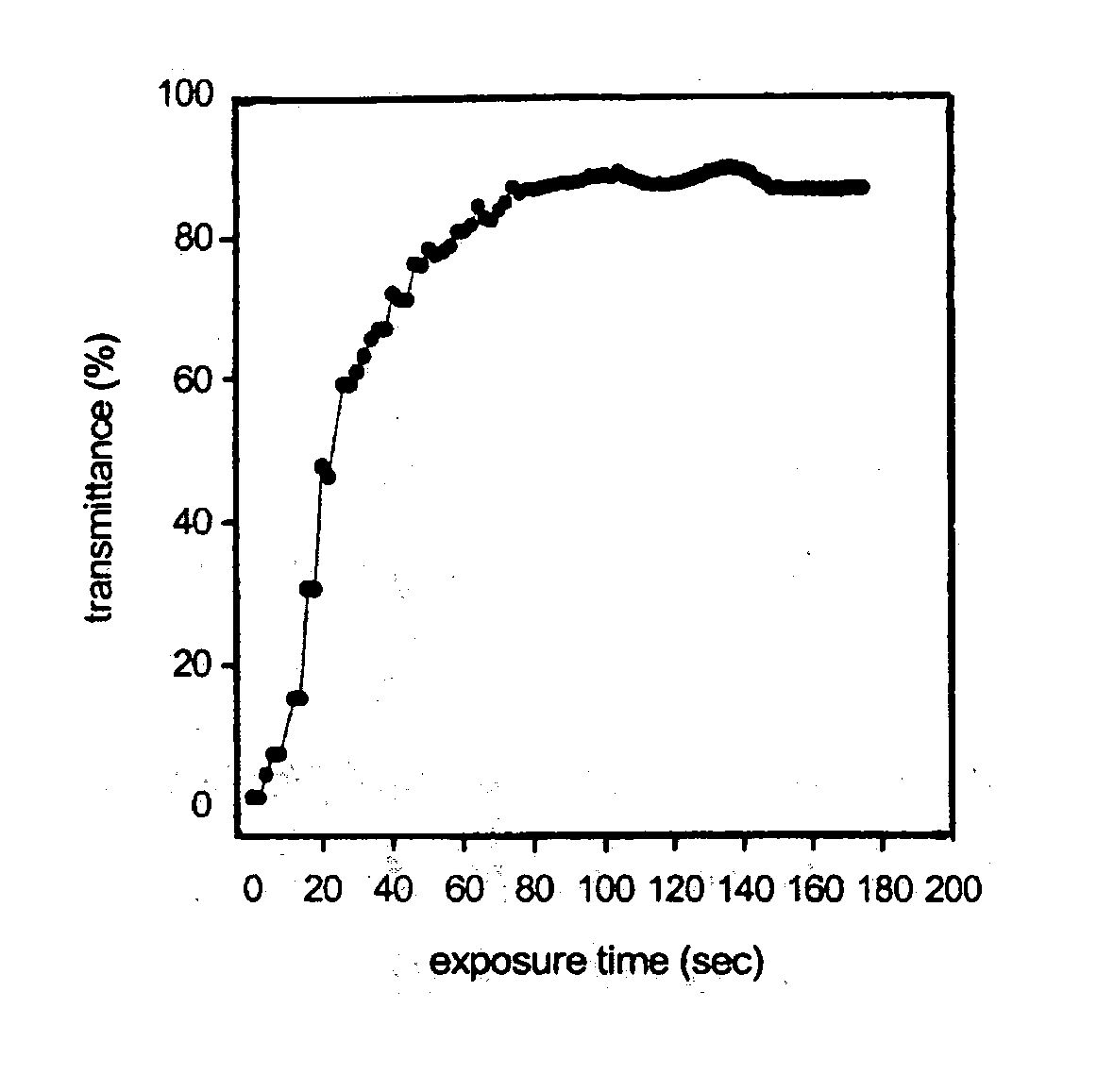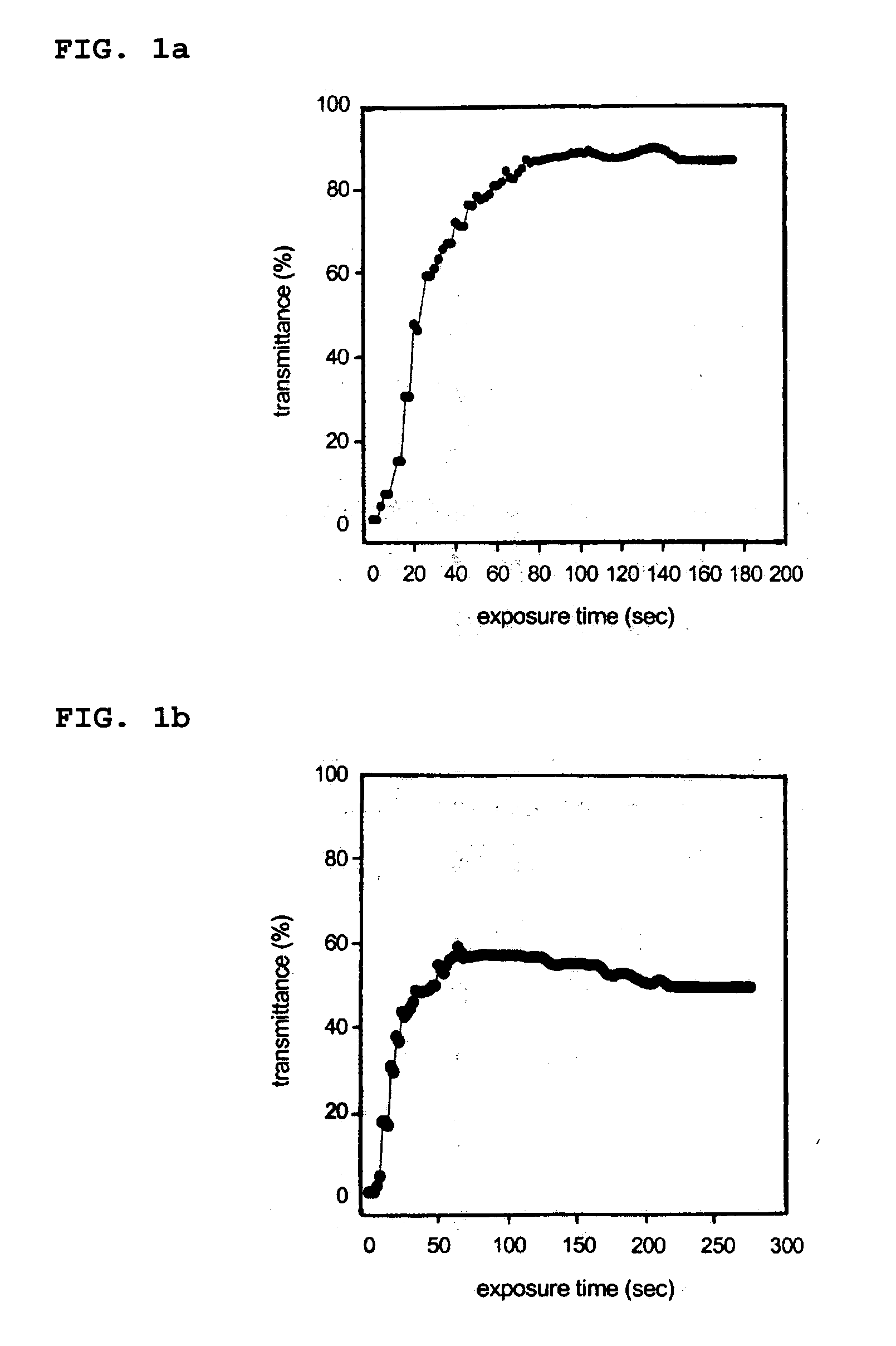Method of preparing photopolymer with enhanced optical quality using nanoporous membrane and photopolymer prepared by the same
a nanoporous membrane and photopolymer technology, applied in the field of preparing photopolymers using nanoporous membranes, can solve the problems of reducing the thickness of the prepared film, deteriorating the diffraction grating, and not being commercially available for three-dimensional information storage devices, so as to improve the optical quality, inhibit the contraction of volume, and prevent the effect of reducing the transmittan
- Summary
- Abstract
- Description
- Claims
- Application Information
AI Technical Summary
Benefits of technology
Problems solved by technology
Method used
Image
Examples
example 1
[0026] To prepare a photopolymer solution, 0.32 g (46.95 wt %) of acrylamide as a photopolymerizable monomer, 0.36 g (52.82 wt %) of triethanolamine as a photoinitiator, and 0.0016 g (0.23 wt %) of methylene blue as a photosensitizer were introduced to 0.05 L of a tetrahydrofuran solvent.
[0027] A polymer having a nanoporous structure (cellulose acetate membrane having 10 nm sized pores) was immersed into the photopolymer solution for 24 hours, followed by volatilizing the solvent to create a polymer film. Thereafter, the polymer film was exposed to two recording beams (633 nm laser) having identical light intensities in a range of 2-10 mW / cm2 for about 30-200 seconds, thus preparing a desired photopolymer.
example 2
[0028] To prepare a photopolymer solution, 0.32 g (19.03 wt %) of acrylamide as a photopolymerizable monomer, 0.36 g (21.41 wt %) of triethanolamine as a photoinitiator, 0.0016 g (0.09 wt %) of methylene blue as a photosensitizer, and 1 g (59.47 wt %) of polyvinylalcohol as a binder were added to 0.1 L of a tetrahydrofuran solvent. The photopolymer solution was then cast on a glass substrate, and the solvent was volatilized to create a polymer film. Thereafter, the polymer film was exposed to two recording beams (633 nm laser) having identical light intensities in the range of 2-10 mW / cm2 for about 30-200 seconds, thus preparing a desired photopolymer.
example 3
[0029] To confirm the effects of a nanoporous structure on preventing light scattering upon preparation of a photopolymer, the photopolymers prepared in Example 1 and Example 2 were measured for transmittance according to an exposure time upon exposure to two recording beams (633 nm laser) having identical light intensities in the range of 2-10 mW / cm2 for about 30-200 seconds. The results are shown in FIGS. 1A and 1B.
[0030] As seen in FIGS. 1A and 1B, the photopolymer prepared in Example 1 is higher in light transmittance than that of the photopolymer prepared in Example 2, thus exhibiting low light scattering loss.
PUM
| Property | Measurement | Unit |
|---|---|---|
| diameter | aaaaa | aaaaa |
| diameter | aaaaa | aaaaa |
| diameter | aaaaa | aaaaa |
Abstract
Description
Claims
Application Information
 Login to View More
Login to View More - R&D
- Intellectual Property
- Life Sciences
- Materials
- Tech Scout
- Unparalleled Data Quality
- Higher Quality Content
- 60% Fewer Hallucinations
Browse by: Latest US Patents, China's latest patents, Technical Efficacy Thesaurus, Application Domain, Technology Topic, Popular Technical Reports.
© 2025 PatSnap. All rights reserved.Legal|Privacy policy|Modern Slavery Act Transparency Statement|Sitemap|About US| Contact US: help@patsnap.com



